#there was also an echidna and some quokkas
Explore tagged Tumblr posts
Text




Various marsupials from the Aussie Walkabout section of Taronga Western Plains Zoo, Dubbo, NSW, January 2025
#photography#nature photography#marsupials#swamp wallaby#Wallabia bicolor#red kangaroo#Macropus rufus#koala#Phascolartos cinereus#there was also an echidna and some quokkas#and red necked wallabies#the devils were in a seperate enclosure and will get their own post
0 notes
Photo



finally had the time to doodle these guys. absolutely LOVED this game
#tmosth#the murder of sonic the hedgehog#sth#sonic the hedgehog#knuckles the echidna#barry the quokka#tails the fox#also trying out some new textures#the game sprites really convinced me on the look lol
2K notes
·
View notes
Photo
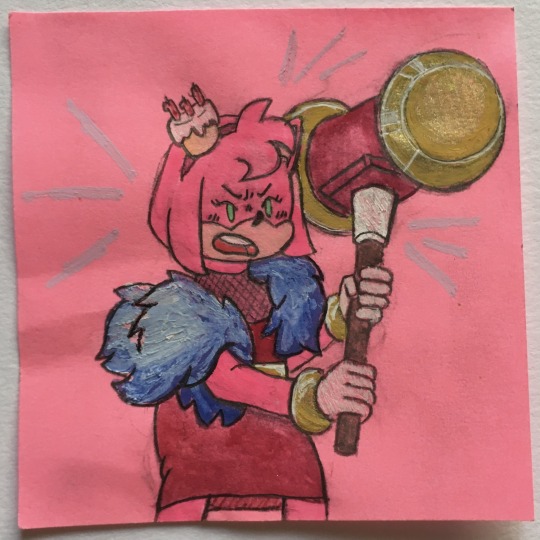

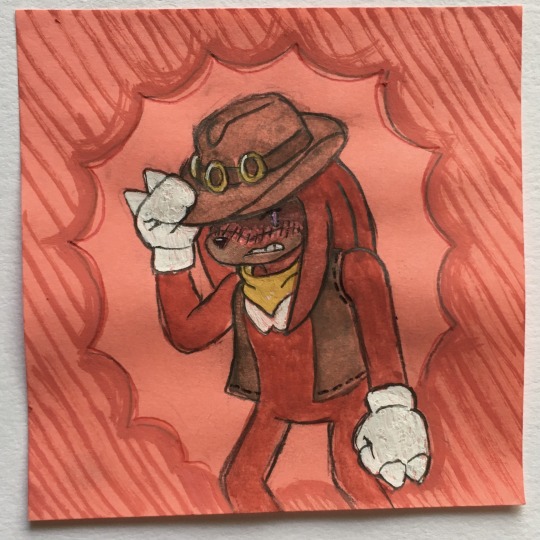
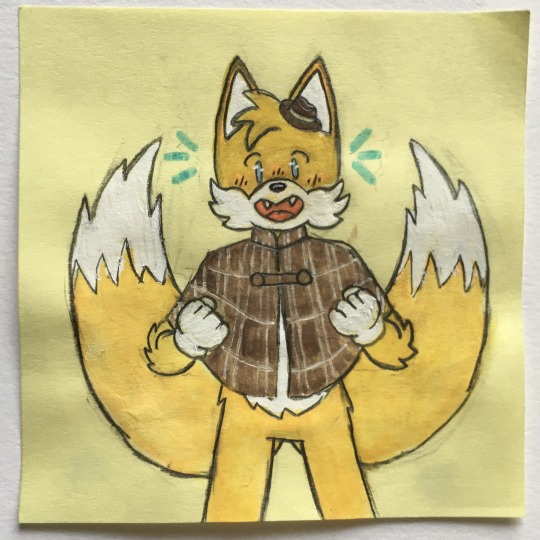
The Murder of Sonic the Hedgehog has taken over my brain so here’s some redraws of (a few) of my favorite sprites!!! :D :D
#the murder of sonic the hedgehog#tmosth#amy rose#amy the hedgehog#barry the quokka#knuckles the echidna#tails the fox#miles prower#really I meant to draw fan art for the /toh finale this week but alas.... Sonic gets Murdered: The Game was too good and I love it#I mean knuckles is wearing a COWBOY HAT and says YEEHAW how was I supposed to NOT be obsessed with this game???#for the record I'm 100% going to draw more (already have actually) but I wanted to post this batch before im extremely busy this weekend#also I love Barry and would defend them with my life#thats not really related to anything but I wanted to say it#anyways I should PROBABLY get some homework done (or at least wash dishes) before I go home for the weekend so see y'all later!! :)#my art stuff#the sticky note doodle takeover of 2023
89 notes
·
View notes
Text
OC SBS
Happy Woman's Day for on this day I will write down SBS trivia facts of my one piece oc's women with 8 facts about them.
Bishop D Elisa
Her birthday Is July 7th Which is Tanabata also know as star day in japan reason was her devil fruit being related to space and her being like a goddess like the heavenly maiden which was nickname that was once given to her.
Her favorite food Is custard cream puffs and her least favorite food is oatmeal
Her Hobbies are stargazing and Dancing.
If she wasn't a pirate she would be a Lounge singer
A flower she resembles would be orchid
Her animal would be a Snow leopard
She's is the youngest, smallest female member of the whitebeard pirates
She is the only one to have a Heterochromia but it was force by her old man.
Malley D'o Grace
The first female to join kidds crew
Her birthday is July 3rd Which is ocean day and because she is a chef most cooks dream is the all blue which is a dream ocean.
Favorite food Is macaroni gratinte and her least favorite food is Spicy curry
Her hobbies Baking and hiking
If she wasn't a pirate she would be Biker cop
Her animal would be Echidna
A flower that resembles her is Apple blossom
She only told Kidd and killer about her mark and her being A will of D
Delahaye Primrose
She studies herbalist on learning medicine all natural even from toxic ones some day.
Favorite food is Carbonara and least favorite food is apan
If she wasn't a pirate she would be Florist
The flower she resemble of primrose
Her hobbies exploration and camping
Her animal would be a lemming
She was able to join law crew after saving bebo
Her name comes from primrose comes from the flowers which means first she is the first one to gain a devil fruit before the other girls
Swann Mary
Favorite Food eclairs least favorite food tofu
Was able to join sword for secret reasons even if she was a slave
Her hobbies are woodworking
Her animal Quokka
If she wasn't a marine she would be a security guard
On her birthday is when fredrick dougless escape from slavery (never imagine that) which she was one of few also escape with help.
The flower she would bay tree
Her surname comes from Elizabeth swann from pirates of the Caribbean
Bishop D Eve
Her animal would be a snowshoe hare
She was founded by issho the same way dragon founded sabo
Her hobbies reading fantasy books and singing
Favorite food Checker cookies least favorite food is broccoli
the flower Belladonna
If she wasn't marine she would be a middle school student
She is one the youngest members of the marine with cody and have a high position
Like her sister,ace and yamato all of them resented their fathers
This is it also here are three more women which I name for a oc's in the future base on fanfiction I came across
Charlotte Jubliee
Charlotte Cream
Donquixote Vanessa
0 notes
Text
Aussie Wildlife FAQ
So here's questions I'm frequently asked as both a wildlife rescuer and carer and keeper at a wildlife sanctuary. Heads up, this is a long post, I've made the questions stick out so you can easily skip through. I've tried to make it as easy to read as possible, and to find what you're after, whilst also providing lots of info.
Poison Vs Venom, what's the difference?
Well, mostly, poison just never stops killing. Like if you poison an insect, then a bird or small mammal eats that insect and they slowly get poisoned by all the poisoned insects they eat, then something eats them, like an owl, and that gets poisoned, then as it rots the poison goes into the environment, etc. Poison never dies. Venom has to be injected, so yes you can be envenomated by a dead animal, if you are stupid. Poison can be inhaled, eaten/drunk or even through touch. So if a cow is poisoned you have to dispose of the body safely, if a cow is bitten by a venomous snake, technically you can still have steak for dinner.
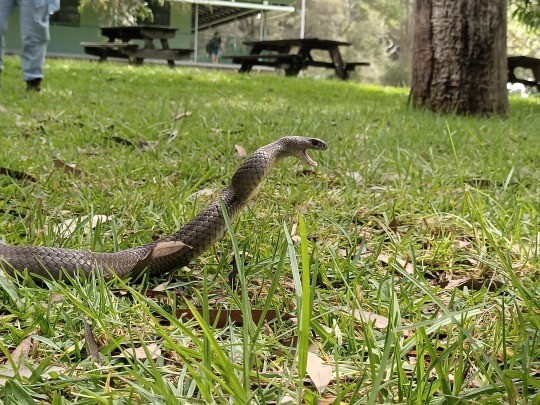
Are all Australian animals out to kill you?
Maybe.
They could want to kill us, I mean as a species we aren't that great. Their ability to kill us however is limited. So are all Aussie animals able to kill you? No. So we have lots of cute small mammals, like antechinus, dunnarts, pygmy possums and the like, that can bite and scratch but are very tiny bois. We even have lots of non-venomous snakes, pythons and blind snakes. Most lizards outside of Goannas can't cause too much damage. Echidna's are completely defensive, have no attack whatsoever. Lots of birds have no interest in you, unless you get near their nest. Freshwater Turtles, Little Penguins and Tawny Frogmouths all main defense is shitting really stinky shit at you. Even our venomous snakes, as long as you seek medical attention you should be fine. Considering we have the top 10 most venomous snakes in the world but average only 1 death a year that's pretty good.
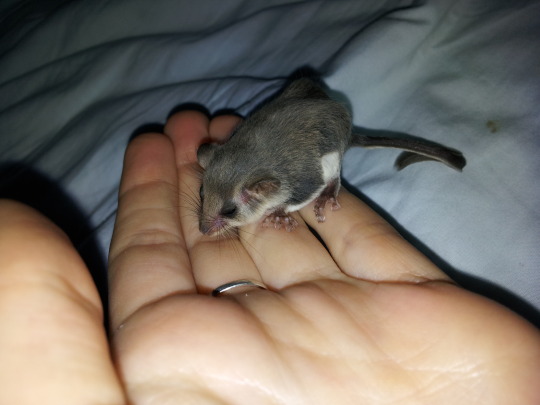
But you still have lots of dangerous animals right?
Yes.
Maybe I should elaborate. Any animal is dangerous, including you, if given the right circumstances. I'm a lovely person but hurt my dog and you better run. Most animals don't want a bar of you. However, if you are a threat to them, or their babies, they will defend themselves. A lot of animals get tagged with the word 'aggressive' which I don't like, aggression is a human emotion that I've never seen in wild animals, or even pets and things. Mostly it's defensive behaviours that people read wrong. For example, the most venomous snake in the world is the Inland Taipan (found in Aust.), however the most dangerous snake in Australia is the Eastern Brown snake, less venomous but also less shy and lives in suburbia. Still, it only ever strikes at people when it feels cornered and needs to get you to back the hell off. And lets be real here, what else can they do? They can't yell and scream, they can't punch or kick. Legit their only option is to bite, and even then mostly it's a closed mouth strike to freak you out into stepping back, and most people bitten by snakes are given a 'dry bite' where no venom is injected, as they want to use it on their food not waste it on us. And 90% of snake bites that happen in Australia are people either trying to catch or kill a snake.
It's fairly simple. Don't threaten animals, don't give them a reason to be dangerous and you are fine. Crocodiles in the water? Don't swim there. Sharks around? Avoid swimming at twilight. Snake? Leave it alone. Nest with baby birds? walk away. You don't randomly show up in some strangers home and expect them not to react, so why do we expect different from animals?
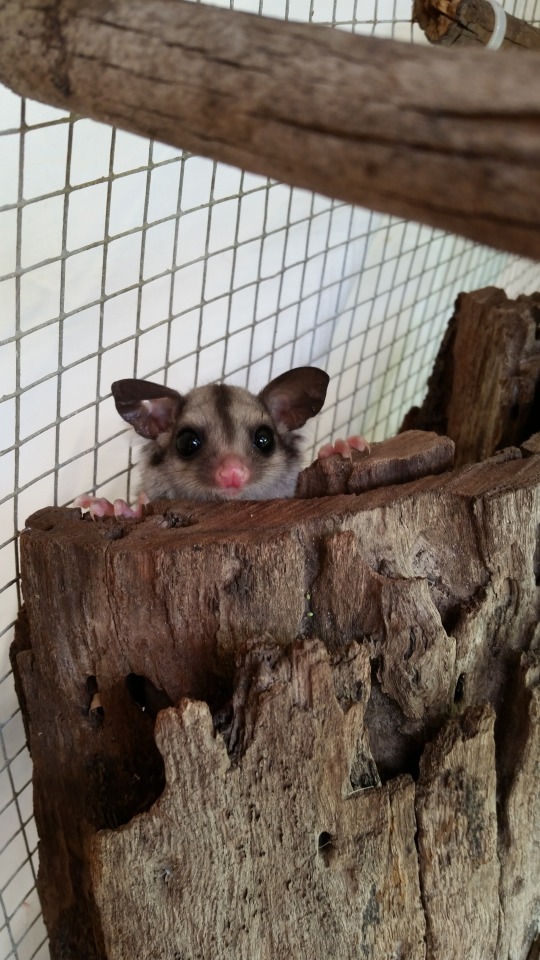
What animals are on the most 'dangerous list' then? Which animals should I really avoid pissing off?
Start with the obvious. Crocodiles, venomous snakes, sharks, some jellyfish, venomous spiders, stone fish, blue ringed octopus, birds of prey (our Wedge Tailed Eagle WILL attack drones, hang-gliders and helicopters if they come into their territory) Then you've got the less obvious. Ants - like meat ants, they will swarm over you then all bite down at once. 1 bite isn't so bad, a whole colony biting you, deadly. Then there's other ants in the Myrmecia family (bull ants and the like) that are just HUGE, and have massive mandables for biting and also can sting you, and are one of the most toxic insects in the world.
Wombats - Can run at 40km/hr, skull so hard it's the only thing a Tassie Devil can't eat, able to bite your calf muscle clean off your leg, oh and they have killer booty. A hard cartilage plate in their lower back that they use to block their burrows, and if threatened can lay down and as the animal tries to get past jam their legs straight and crush the skull of a fox against the roof of their burrow, easily break a dingoes jaw or even destroy your hand.
Kangaroos - yes they box, hahaha wouldn't it be funny to box with a kangaroo. NO. Kangroos box for fun but also to defend themselves and their mob. The Alpha male is the big buff one that looks like he's on steroids. He looks like that for a reason, to defend and protect his mob. DO NOT MESS WITH ANY KANGAROOs, but really don't mess with Big Daddy (for being the alpha he gets all the ladies) Kangaroos are made for this. A punch from a Kangaroo can easily break you ribs. They can lean back on their tail and bring both legs up to kick you, easily tearing you open, which they can do with the claws on their toes, and so basically dissecting you from sternum down. Oh and if they gran you round the neck for a 'Cuddle' DUCK AND RUN. They will hold you in a kind of choke hold and then bring their legs up to kick you and basically snap you in half. Don't even mess with Wallabies man, they may be smaller but can still do damage.
Tassie Devils - are extremely shy and slower than you, like you can actually run away from them. BUT. They have the strongest bite strength compared to size of any animal. The have a PSI of 1200 and males weigh around 8 kg. For perspective, Hyenas have a PSI of 1100 and males weigh around 50kg
Brushtail Possums - They may be cuter than the American Opossums but trust me, they don't want you around. They are solitary so most people have heard them fighting of a night, screeching, shrieking, hissing, growling and making darth vadar noises. Heads up from someone who has had to rescue them from awkward places (fire-places, BBQs, closets) They are stronger than you and they will f*** you up. Even without them meaning to I've gotten injuries from my joey Brushies, they get so keen on their milk when you put it in that they climb your arm and their claws are sharper than cats. Also the sheer strength of them. I'm stronger than I look but if they are clinging on to a tree you are gonna need all your strength to get them off. The can also bite your finger clean off. And I've seen injuries from people who feed wild ones and for some reason have been late to put out the food or something and they've climbed their leg or even jumped on them - stitches were required in a few of those cases (human skin is not thick like tree bark)
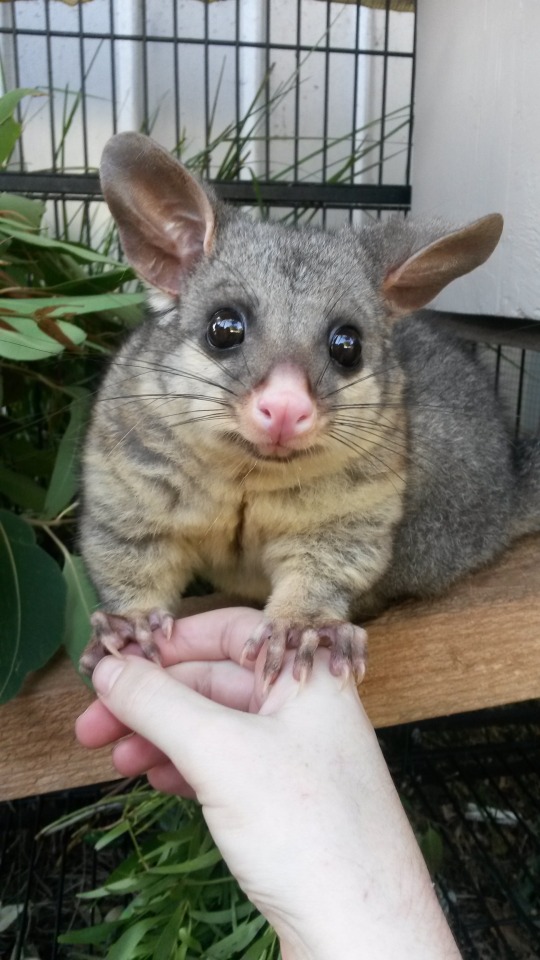
What's with Magpies and swooping?
Simple, they have nests/babies and are protecting them. Australia Magpies are very smart and can recognise faces. If they think you are a threat they will try and scare you off. Just like if you're walking along with your toddler and there's a weirdo doing something strange you hold the kid tighter and closer to you and move through faster. But these guys can't just move their nests or their babies. The spot is chosen based on food availability and shelter from sun and rain, but also not being too cold. It's their spot. I've never been swooped by Magpies, other birds yes, but not Magpies. My local birds know me as the lady that cleans and fills the bird bath. Legit the Magpies sing a specific song when it needs filling to call me out to do it. So don't be a threat. If they are swooping in that area, try to avoid it or go through quickly. We used to have Plovers at my school, in the bush at the end of the oval. Never a problem. One day some kids go into the bush and stomp on their nest and eggs. After that they would swoop anyone who came close to there. So the school blocked off that end of the oval. Fair call. Wasn't the birds fault.
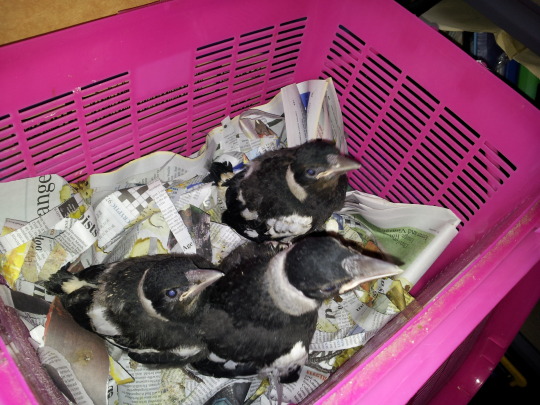
Why is everything named so basic?
Oh you mean the snake that's black with a red belly being balled a Red Belly Black Snake, and the tree with all the doodles on it being called a Scribbly Gum? 80% of plants and animals found in Australia are found NO WHERE ELSE. So the early Europeans had a lot of things to name and when they tried naming it themselves they would get it wrong. 2 good examples are: The Death Adder (only considered highly venomous, not deadly, and not an Adder). Also you're only likely to get bitten if you stand on it or try to pick it up. The Australian Magpie, they saw a black and white bird so it must be a magpie. Nope. Actually not in the corvidae family but in the butcherbird family - Artamidae. So their solution was to either take the Aboriginal word, for example, Quoll, Kookaburra, Koala, Quokka, Taipan. Or name it after what it looks like/sounds like/ is found Boobook Owl - makes a sound like booooo-book Squirrel Glider Eastern Water Dragon Grey Headed Flying Fox Flaky Bark Tea Tree Old man Banksia This can cause confusion though as not every brown coloured snake is a brown snake, and not all Eastern brown snakes are brown. Squirrel Gliders aren't related to squirrels. Flying foxes are bats not actual foxes that fly.
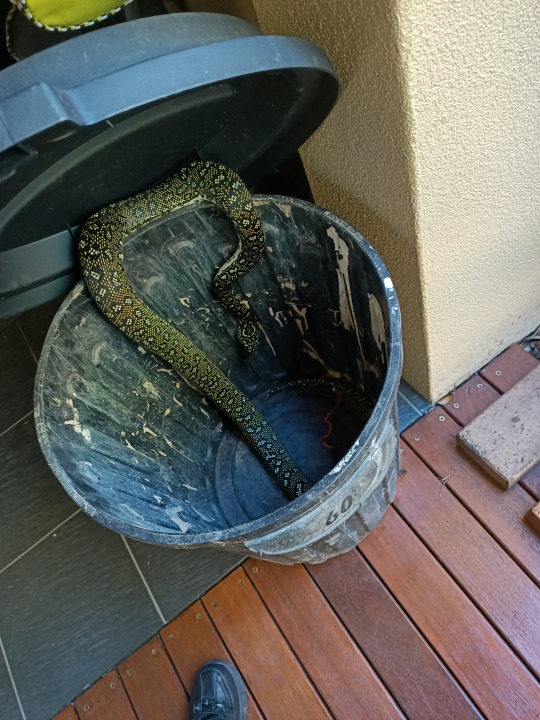
What do I do if I find injured wildlife?
Well, depends on the wildlife and where it is. If it's in a dangerous position, like the middle of a highway, don't try anything. First thing, call a wildlife rescue group, there are plenty around and they have trained people who know what to do. A quick google search should show you all you need to know, also the IFAW's Wildlife Rescue App will identify the closest group to you.
If it's a snake, adult wombat or kangaroo, or any other animal that can cause you serious injury, leave it be. The wildlife rescuers you call can give you basic info on how to help but mostly calling them is the main thing.
If it's something smaller, like a young animal or glider or baby bird and you are able to put it into a cardboard box that will be perfect. The 3 main things injured/ill wildlife need are warmth, dark and quiet. You don't need to worry about food or water. The rescuers will organise that. If you give food or water to an animal in shock you can cause more damage.
THE BEST THING IS TO DO NOTHING. I know this sounds stupid. But so many problems can occur from people who don't know what they are doing helping out. You know what they say about good intentions. For example, picking up a Koala like you would pick up a human child (under the armpits, around the chest) you could actually break their ribs. Also so many Koalas end up needing vet care during heat waves because people pour water into their mouths - they can get pneumonia as the water goes in too fast, it is not a natural way for them to drink. You can also get yourself injured or make the animals injuries worse. I have seen Kangaroos with broken legs get up and try to hop away from people. I have seen severe scratches on other people because they tried to pick up an animal.
What diseases can wildlife give me?
Well. I only know about Australian wildlife, and it's very different to other parts of the world. If you get a bad bite or scratch from wildlife you should see your doctor ASAP, get the wound cleaned properly and make sure your tetanus is up to date (same as if a pet gives you a bad bite or scratch).
There aren't that many Zoonosis that are around in Australia that are easy to catch. Mostly you have to be dealing directly with sick wildlife to get them.
The main thing is Australian Bat Lyssavirus. ABL for short. Now our bats can carry it. About 1 in 1000 bats may have it and you HAVE to be bitten or scratched for it to be transmitted to you. If you are bitten or scratched by a bat your chance is 0.1% of getting ABL but it is related to Rabies, so head straight to hospital for treatment. If you don't touch a bat you won't get bitten or scratched and so your chance of getting it is 0. Hendra is the other virus our bats carry, however it has to go through a horse before it mutates enough for humans to get it.
Basically it's only when you get involved with wildlife that your risk of getting a disease from them is higher than VERY unlikely. If you happen to help some wildlife, and you maybe wrap them in a towel or jumper, even if they urinate on it. You can just chuck it in the wash (I usually add a little extra disinfectant) and it will be fine. Treat it the same as if a pet had used it or urinated on it.

What's some Good Wildlife Apps to have?
Well, there's so many out there now hey? Here's some that I've found handy or know people that use. WomSAT EchidnaCSI PlatypusSPOT are all for recording sightings of these animals (wombats/echidnas/platypus) this helps researches track where they are and how they are going which means we can help them more as well. OzAtlas - record a sighting of anything Australian, animal, plant, fungus, insect. FrogID - need to identify a frog? This is the app for you. Use photos or sound recordings, Field Guide to *insert state/territory* Fauna - Have a field guide on you wherever you are without having to carry a book. Seek by inaturalist - Helps you identify any animals, plants, insect, fungus. IFAW Wildlife Rescue - wildlife rescue app (currently for NSW only but soon expanding) will give you advice on what to do and put you into contact with the local wildlife rescue groups.
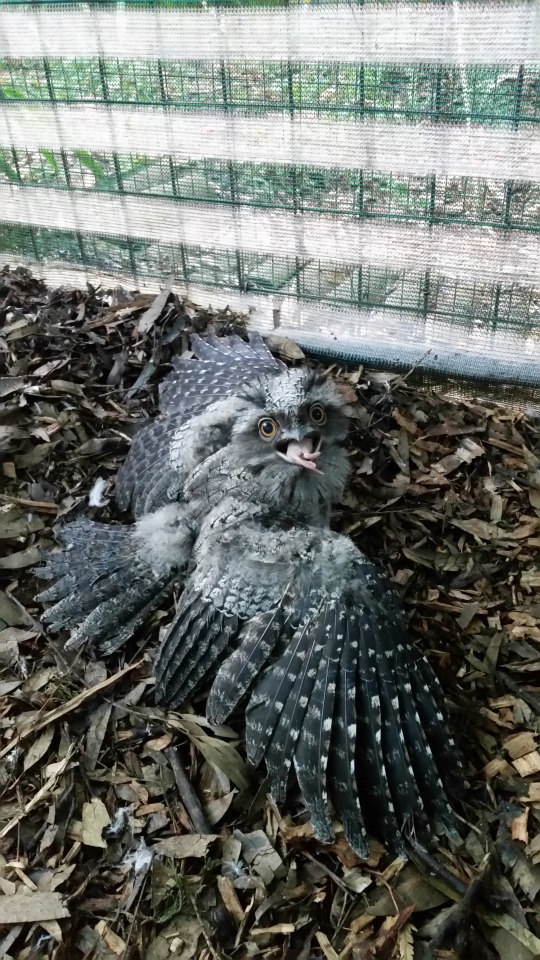
Besides Cats and Foxes, what other invasive species have you got that cause problems?
First up, any invasive species causes a problem. In Tasmania they have issues with Sugar Gliders, because they are not naturally found there and use up tree hollows that other animals need. Invasive species cause competition for food, water and shelter. They can also bring in diseases that didn't exist in Australia before and that our natives have no defence against (like cats and Toxoplasmosis) Here's a quick list of invasive animal species in Australia. Cats, dogs, foxes, pigs, water buffalo, ferrets rabbits, horses/brumbies, goats, camels, Cane Toad, European Honey Bee, Common Myna bird, deer, donkey, common starling, common pigeon, black rat, brown rat.
There's more, there's reptiles, and weeds and fish but those guys ^ are the main ones that cause problems.
I am an animal lover but unless we get rid of these animals you loose more in the long run. I'm 100% against use of poisons, I prefer having people hunt them to be honest. If you know what you are doing and have the right equipment you can give them a quick, painless death. To give you an idea how bad invasives are:
The introduction of the rabbit is the main cause the Lesser Bilby became extinct.
The introduction of cats and toxoplasmosis is believed to be the main reason Eastern Quolls became extinct on mainland Australia
Rats led directly to the extinction of 5 of Lord Howe Island's bird species
30% of our land snakes and Goannas are at risk as Cane Toads are rapidly spreading and eat their eggs.
The Common Myna Bird is the 2nd greatest threat to Australian native birds (habitat loss being the 1st)
The fox population has been estimated at 72 million and consume around 190 million birds a year
There's an estimated 23 million wild pigs/boars and an estimated 2.6 million goats - all eating whatever they come across.
How can I help Australian Wildlife?
There's the stuff we already know, like reduce/reuse/recycle and don't litter. But there's other things you may not know about.
Turn off lights at night - any lights that you don't need, don't have them on, especially if they are outside. Lots of animals require insects in their diets, particularly moths, which can be distracted by lights. Zoos Victoria have launched educational stuff for this https://youtu.be/ZAcL4FKPtHw
Learn about them - It's not hard, there's multiple ways you can do it. There's books, tv shows, pod casts, you can follow sanctuaries and other people who work with wildlife on social media. Planting flora that's native to your area is great as different plants can attract different animals and it's much lower maintenance, being made for that environment. You can even find cool life-hacks like Lemon Scented Tea-Tree doesn't just smell amazing and feed lots of wildlife, it keeps the mozzies away! There's different kinds of nesting boxes out there specific to different species that you can put up to help 'foster' that species. You can even become friends with your local Magpies! Mine know me as the lady who cleans and fills the bird bath and all I had to do was whistle to them when I was done and now they are really chill around me and I get to watch their antics. Debunk Myths! - In learning about wildlife you can debunk lots of myths like: a mother bird won't take it's chick back if you've touched it (fake news!) or that snakes dislocate their jaw to swallow their prey (that would be soooo painful!)
Put out water - have a bird bath and keep it clean and full. Or if you don't have one or want to get one just put water out on hot days. Summer's getting hotter and hotter and our animals really suffer. So put out a nice pot or container of water. Don't forget to put a rock or a stick in it if it's a slippery surface (like plastic or metal) so that little animals and bugs don't fall in and drown, and keep it out of the sun if it's likely to heat up.
Check roadkill - it's not pleasant but needs to be done. Don't do it if it's a motorway or somewhere dangerous, but if you can PLEASE do. Roadkill sometimes looks dead but isn't and you don't want them laying there suffering. They may have pouch young if they are a marsupial or young nearby that will need care without their parent. And where possible get it off the road. Species like Tasmanian Devils, Goannas and Wedge Tailed Eagles feed on roadkill and can then end up as roadkill themselves. Even if you have to drag it, it's dead and not gonna feel any more pain. 100% of people I have attended a rescue for who have called because they stopped and found a joey or young in a pouch or hiding nearby have not regretted their decision at all. Even if they were late for work, they saved a life and it was worth it.
Avoid using poisons - insecticides, pesticides, snail bait and straight up rat poison. Like mentioned in POISON VS VENOM, it just keeps killing. There are so many other options out there and they aren't hard to find. There's stuff on the internet but also at Bunnings I've found more environmentally sound options that use Tea Tree oils and Eucalyptus instead and work just as well.
Don't feed them! - Most Aussie animals are gluten and lactose intolerant. BREAD IS REALLY BAD! and if not eaten it gets mouldy and causes disease. Putting out bird seed is the number 1 problem when we talk 'feeding wildlife'. WHY?
The 'wild birdseed' that you buy in shops isn't actually for wild birds. JUST LOOK AT IT, you don't see those seeds growing out in the wild. The main seed wild birds eat are Bottle-brush, She-oaks, Banksias, Wattle and Eucalypts. None of those are found in these bags of seed.
Even for seed eaters that seed you buy is too fatty and unbalanced
For those that don't usually eat seed, like Lorikeets, eating the seed destroys the specialised bristles on their tongues that they need to eat their natural food - nectar and pollen.
If you don't keep it clean you will spread diseases, especially psittacosis (beak and feather) for which there is no cure just a slow, drawn out death. You can also catch it and end up in hospital.
You cause an imbalance. Animals breed based on food availability, if you make food available they will breed but there might not be enough space or trees available and you create more competition and also they end up relying on you and if you go on holiday or anything they can die without that food.
You can cause health issues in other animals. Possums love bird seed but it makes them fat, making it harder for them to escape predators.
You will be feeding non-natives. For example, the Common Myna bird cannot survive on wild plants, but if there is a food source around they can. Got rid of Common Mynas in my neighbourhood by convincing my neighbours to stop putting out bird seed.
RATS LOVE BIRD SEED. Specially feral rats. Mice also love bird seed.
You make a predator hot-spot. It won't take long for predators to realised animals they prey on visit your feeding station and they will come. The most common predator I find around bird seed? Snakes. Snakes love rats and mice, rats and mice love bird seed. You do the maths.
If you want to feed them just do some research and plant trees that are food for them.
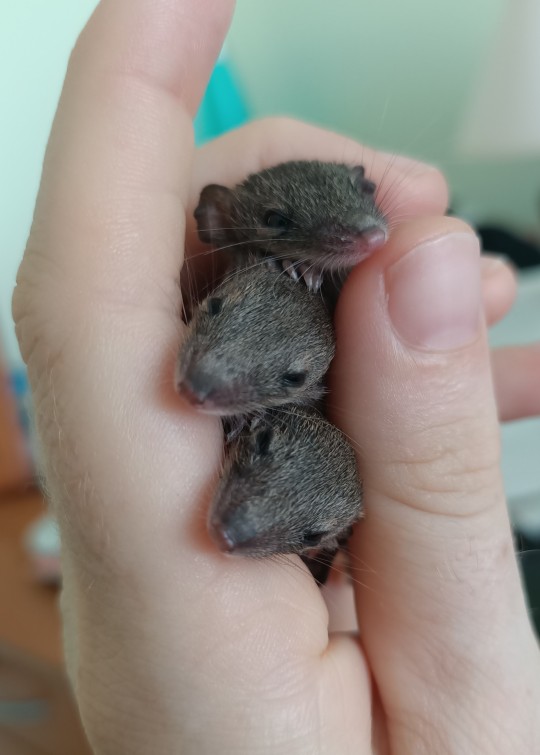
How many species are endangered?
Sadly, it's almost quicker to list what's NOT endangered in Australia.
That's hard to say as there is different ways they can be endangered. In one area they may be common, but in another they could be disappearing. You can have Endangered lists at different levels; local, state, national and international.
But the most used list is the International Union for Conservation of Nature’s Red List of Threatened Species has evolved to become the world’s most comprehensive information source on the global extinction risk status of animal, fungus and plant species. AKA the IUNC Red List
Here's a bit of a breakdown: EXTINCT 26 mammals 7 birds 4 amphibians CRITICALLY ENDANGERED 7 mammals 8 birds 15 amphibians 13 reptiles ENDANGERED 18 mammals 29 birds 18 amphibians 21 Reptiles VULNERABLE 51 mammals 40 birds 23 amphibians 35 reptiles NEAR THREATENED 43 mammals 37 birds 9 amphibians 21 reptiles
Then there's the "data deficient" category where they really just don't have the info. 10 mammals 11 amphibians 42 reptiles
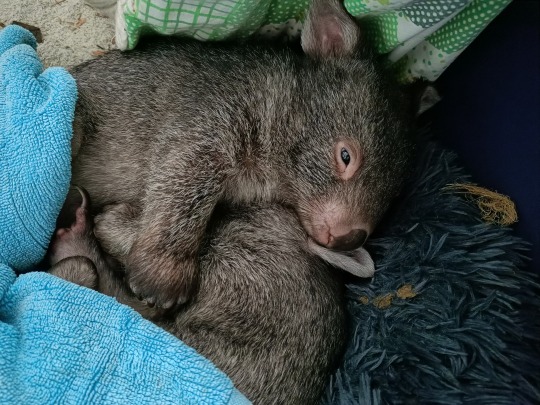
I will continue to update this post as I think of other things. Feel free to send me any questions you have
#Wildlife#Australian animals#Aussie#FAQ#endangered animals#what people should know#long post#venom vs poison
39 notes
·
View notes
Text
"Say G’day to Aussie AR Animals"
Australia is home to some of the most magnificent creatures in the animal kingdom: birds that laugh, duck-billed monotremes and marsupials that smile, hop and sleep for ~20 hours a day. They can’t be found in the wild anywhere else in the world. Until now.
With AR on Google, you can meet eight life-sized Aussie animals up close and bring them into your backyard, living room, classroom—or take them on your adventures. Just search for koala, kangaroo, quokka, wombat, platypus, emu, kookaburra or echidna on your mobile browser (Android or iOS) or in the Google App and tap “View in 3D.”

10:25
You’ll be able to see their life-size scale, detail, movement—and even hear their sounds on Android devices (sounds are coming soon to iOS too). You’ll also be able to capture content of these Aussie icons.
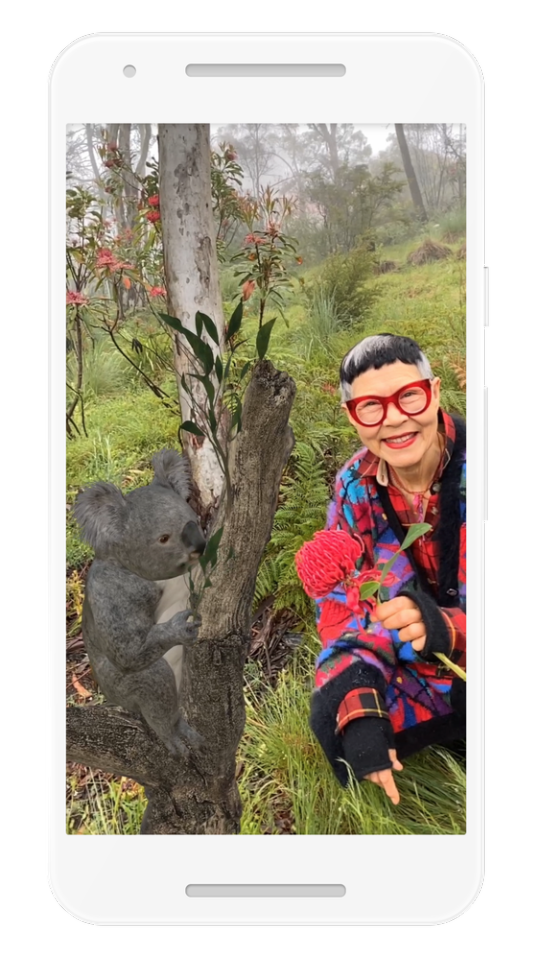
Our fascination with Aussie creatures, especially koalas, has been on the rise this year. During Australia’s devastating bushfires—which endangered thousands of koalas—search interest for koalas hit an all-time high globally in January and we even worried they may be extinct (thankfully, we can confirm they aren’t).
Here’s a list of the top worldwide trending questions this year so far for the Aussie AR animals you’ll now get to meet in Search:
Are koalas extinct 2020?
What does a baby platypus look like?
Can an emu fly?
How many koalas have died?
How big are wombats?
Are koalas friendly?
How do koalas drink water?
What does the inside of a kangaroo pouch look like?
Can koalas be pets?
How are baby kangaroos born?
While most of us can’t travel to the Aussie outback right now, you can learn about these animals from the comfort of your couch or picnic rug. Search for these Aussie AR animals on your mobile or tablet today so you can paddle with a platypus, cackle with a kookaburra and meet your new mARsupial mates!
Source : The Official Google Blog via Source information
0 notes
Photo

A highlight of any Australia vacation is meeting the unique Australian animals! Whether you’re visiting a wildlife sanctuary, watching kangaroos hop freely in the wild, cuddling a koala, or swimming with whale sharks, there are so many opportunities to experience Australia’s unique wildlife.
Here are some of the most iconic animals you’ll see in Australia:
Kangaroos & Wallabies
Photo courtesy of Ellen Hoffman
These iconic Australian animals are of course at the top of the list! Australia has 55 native species of kangaroos and wallabies. They look very similar, but have a wide range of sizes; wallabies usually look like a kangaroo, but smaller.
There’s no shortage of places to see wild kangaroos in Australia, but our favorite is Kangaroo Island. Over a third of the land on this southern island is protected in nature reserves. At Southern Ocean Lodge, one of the complimentary signature experiences is “Kangas and Kanapes,” where you can enjoy 5-star cuisine and bubbles while watching the roos hop around at dusk.
Koalas
Photo courtesy of Laura Tober
Who doesn’t love cute koalas?! You can find these adorable animals all over eastern Australia—yet their population is in steep decline and they are actually listed as vulnerable (one step below endangered).
You can get your picture taken with a koala at Wildlife Habitat Port Douglas. This is a great activity for families visiting the Great Barrier Reef! If you want to get more adventurous and see them in the wild, take a tour with our mates at Echidna Walkabout Nature Tours. Echidna Walkabout helps fund wild koala conservation, so by taking the tour you’ll be helping the animals.
Quokkas
Photo courtesy of Shannon Bradley
These little guys’ happy smiles make them some of the cutest Australian animals! Quokkas are some of the smallest members of the macropod family (aka “big foot”), which includes kangaroos and wallabies. You can get an Instagram-worthy quokka selfie on Rottnest Island off the coast of Perth. But remember: while quokkas look cute and cuddly, they are still wild animals, and it’s illegal to actually touch them.
Wombats
Wombat at Bonorong Wildlife Sanctuary. Image: Tourism Tasmania
Wombats are some of the lesser known Australian animals, but once you get to know these waddling marsupials, they just might be your new favorite! Wombats are very short and sturdy, and they’re some of the world’s best diggers. Fun fact: their poo is square thanks to their extremely long digestive system.
Wombats can live up to 30 years, but in the wild, most of them survive only 3-5 years. There are some great sanctuaries you can visit that rehabilitate injured and orphaned wombats and release them into the wild. One of our favorites is Bonorong Wildlife Sanctuary in Tasmania. Here, you can even take a private after-hours tour and hand-feed the wombies!
Quolls
Black quoll. Image: Pepper Bush Adventures
There are 4 species of quoll in Australia, and while they all look a bit different, each species has distinctive white spots. You might mistake these Aussie critters for some type of rodent, but they’re actually carnivorous marsupials that eat birds, reptiles, and sometimes other furry creatures.
Quolls like to come out at night and can be shy around humans. One of our favorite wildlife experiences is a campfire dinner with our mates at Pepper Bush Adventures in Tasmania. While enjoying a delicious meal in the remote wilderness, you’ll see the nocturnal creatures (including quolls) come to life and start wandering around your camp!
Tasmanian Devils
Tasmanian devil at Bonorong Wildlife Sanctuary. Image: Tourism Tasmania
You may know the Tasmanian Devil as a Looney Toons character, but it’s a real live Aussie critter, too! Tassie devils are the size of a small dog, but they have a nasty reputation. When they’re threatened, they’ll make frightening growls and screams. Imagine early settlers hearing those devilish sounds out in the bush at night and it’s easy to see where the name comes from!
Tasmania is the only place in the world where you’ll find these rare creatures in the wild. But don’t be too scared about meeting them—they’re quite shy and only scream and growl when they feel threatened.
At the after-hours Bonorong Wildlife Sanctuary tour, you can actually feed the Tasmanian devils and play a little game of tug of war over their food!
Platypuses & Echidnas
Left – Platypus at Healesville Sanctuary. Image: Yarra Valley Tourism. Right – Echidna. Image: Tourism Tasmania
Platypuses and echidnas are the world’s only 2 species of monotremes, or mammals that lay eggs. You’ve probably seen a platypus before, with its duck bill, otter body, and beaver tail. They’re difficult to see in the wild, but your best bet is in a quiet riverbank in the eastern coastal areas.
Echidnas are also strange-looking creatures. They have spines like a porcupine, a beak like a bird, a pouch like a kangaroo, and they lay eggs like a reptile. Fun fact: Baby echidnas are called puggles, and they’re very cute!
You can see both of these unique Australian animals (and many more) at Healesville Sanctuary outside of Melbourne.
Sea Turtles
Turtle hatching. Image: Heron Island Resort
There’s nothing like swimming alongside a turtle in the Great Barrier Reef! Sea turtles can be found in many Australian waters, but the Great Barrier Reef is one of the best places to see them year-round.
If you time your trip right, you might be treated to an even more amazing experience: watching turtle hatchlings make their way out to sea! A great place to see them is Heron Island, a fabulous resort located on the Great Barrier Reef. From September to March, hundreds of sea turtles come to nest on the beach, and you may even be able to see a mother digging a hole for her egg. The little hatchlings usually begin to break out of their shells in December.
Large Marine Animals
Swimming with whale sharks. Image: Tourism Western Australia
Australia has thousands of miles of coastline, so it’s easy to see large marine animals like sharks, whales, dugongs (relatives of the manatee), and seals. Ningaloo Reef on the western coast is one of the best places in the world to swim with enormous whale sharks! Unlike whale shark tours in Mexico, these tours don’t require you to wear a life vest, so you can get right up close to the animals (just don’t touch!).
You can swim with sea lions in Port Lincoln, a town on the southern coast. Meanwhile, various whales—including humpback and southern right whales—can be seen along the eastern and western coasts from May to November. And if you want to swim with dolphins, you can do so as an excursion from many major cities, including Sydney, Melbourne, Adelaide, and Perth.
Emus
Emus near Flinders Ranges. Image: Tourism South Australia
These large, flightless birds are so common in Australia that they appear alongside the kangaroo on the Australian coat of arms. There was even an Emu War in the 1930s when struggling farmers in Western Australia were suddenly swarmed with emus that destroyed their crops.
Emus can grow over 6 feet tall and run more than 30 mph! You’ll find these strange Aussie creatures roaming freely in the scrubby bushlands of the outback. The Flinders Ranges in South Australia is a great place to see them in the wild against a beautiful backdrop.
Crocodiles
Crocodile in the water. Image: Tourism Northern Territory
Crocodiles might be some of the most famous Australian animals, thanks to the Crocodile Hunter and the beloved film Crocodile Dundee. You might think there are dangerous saltwater crocs roaming all over Australia, but actually they’re mostly found in the northern outback.
This is one Aussie animal you probably don’t want to interact with! However, its natural habitat is absolutely gorgeous and certainly worth exploring. Kakadu National Park in particular features a lot of the rugged red escarpments, rushing waterfalls, and secluded swimming holes you’ve seen in the movies. We recommend exploring with a guide who knows the area well—ask us about some of our favorite Kakadu tours!
Ready to being planning your own vacation to meet Australia’s amazing animals? Read about our Top 10 Wildlife Tours in Australia, or give us a call at 888-367-0933 to begin planning the adventure of a lifetime!
The post Australian Animals: What You’ll See Down Under appeared first on Down Under Endeavours.
0 notes
Text
Say G’day to Aussie AR Animals
Please CLICK HERE to visit Camilla Ibrahim for the full article.
Australia is home to some of the most magnificent creatures in the animal kingdom: birds that laugh, duck-billed monotremes and marsupials that smile, hop and sleep for ~20 hours a day. They can’t be found in the wild anywhere else in the world. Until now.
With AR on Google, you can meet eight life-sized Aussie animals up close and bring them into your backyard, living room, classroom—or take them on your adventures. Just search for koala, kangaroo, quokka, wombat, platypus, emu, kookaburra or echidna on your mobile browser (Android or iOS) or in the Google App and tap “View in 3D.”

10:25
You’ll be able to see their life-size scale, detail, movement—and even hear their sounds on Android devices (sounds are coming soon to iOS too). You’ll also be able to capture content of these Aussie icons.

Our fascination with Aussie creatures, especially koalas, has been on the rise this year. During Australia’s devastating bushfires—which endangered thousands of koalas—search interest for koalas hit an all-time high globally in January and we even worried they may be extinct (thankfully, we can confirm they aren’t).
Here’s a list of the top worldwide trending questions this year so far for the Aussie AR animals you’ll now get to meet in Search:
Are koalas extinct 2020?
What does a baby platypus look like?
Can an emu fly?
How many koalas have died?
How big are wombats?
Are koalas friendly?
How do koalas drink water?
What does the inside of a kangaroo pouch look like?
Can koalas be pets?
How are baby kangaroos born?
While most of us can’t travel to the Aussie outback right now, you can learn about these animals from the comfort of your couch or picnic rug. Search for these Aussie AR animals on your mobile or tablet today so you can paddle with a platypus, cackle with a kookaburra and meet your new mARsupial mates!
Premier Detroit SEO
0 notes
Photo

Australia is fringed by more than 8,000 islands, each of them unique and filled with unbelievable wildlife! That’s a whole lot of beautiful islands to choose from, so our Australia specialists have curated this list of the best ones to explore on your next trip.
Whether you’re looking to explore or completely relax, we are sure that one of these great islands will fit your fancy. Here are our 7 favorite islands of Australia:
Hamilton Island
Surround yourself with the beauty of the Great Barrier Reef on Hamilton Island. This tropical paradise features sandy white beaches and stunning ocean views around every turn. There are many great hotels to choose from on Hamilton Island, from family-friendly hotels to luxurious adults-only resorts like qualia. In addition to exploring the Great Barrier Reef, you can drive around the island on a golf buggy (there are no cars), relax on the beach, or take a quick hike up to One Tree Hill.
Aerial view of Hamilton Island. Image: Tourism Whitsundays
Fraser Island
Fraser Island is perfect for explorers who want to get off the grid. Flying in from the Queensland capital of Brisbane, your small plane lands right on the beach and your adventure begins! Fraser Island offers a plethora of activities to choose from, like hiking the dunes, exploring the shipwreck of Maheno, watching the migration of humpback whales, or exploring the rainforest filled with unique wildlife. You can visit Fraser Island on a day trip or stay a little longer at the Kingfisher Bay Resort.
The world renowned sandy beaches of Fraser Island. Image: Tourism Queensland
Lizard Island
The Great Barrier Reef has hundreds of gorgeous islands and coral atolls, some of which are home to luxury resorts. Lizard Island is well known for its clear waters and luscious greenery adorning the sandy beaches. The resort offers an exceptional “barefoot luxury” experience amidst some of the most stunning scenery in Australia. Lounge on private beaches, take a helicopter excursion over the Great Barrier Reef, spend a day island hopping, or simply soak up the views from a private plunge pool on your outdoor terrace.
The spectacular setting of Lizard Island. Image: Lizard Island Resort
Kangaroo Island
Kangaroo Island is an ecological haven for native Australian wildlife. Kangaroos, koalas, penguins, echidnas, and bird life all call this island home. Here, you can walk among a colony of endangered sea lions or spot a sleepy koala in the trees. Don’t forget to take in the breathtaking scenery of the island with its rugged cliffs, sheltered bays, native bush lands, and rolling farmland. From wildlife adventures and coastal activities, to food and wine and historical guided walks, Kangaroo Island has something for everyone!
Native Kangaroos hopping around on Kangaroo Island. Image: Tourism South Australia
Hayman Island
Located in the heart of the Great Barrier Reef, Hayman Island is the most northerly of the Whitsunday Islands. The Whitsundays have long been internationally recognized for some of the world���s most beautiful stretches of tropical coastline. Hayman Island is a private island resort that’s perfect for family travel, with luxurious and elegant of accommodations including expansive pools, lush gardens, and pristine white sand beaches. If you are wanting a more adventure-packed vacation, Hayman also offers activities like snorkeling, diving, excursions by seaplane, nature hikes, and bush walks.
The beautiful Hayman Island by InterContinental resort
Tasmania
Visiting Tasmania is a one-of-a-kind experience full of history, natural beauty, and delicious wine. Tasmania is still a wild place; more than a fifth of the island is wilderness and is designated as a World Heritage site, so it’s the perfect place for a wildlife tour!
Tasmania was settled by a rough assortment of convicts, miners, and whalers who’ve left traces of their history at scenic sites around the island. While visiting Tassie, you can explore the forests, cliffs, mountains, and white sand bays. If you head east, you’ll find Freycinet National Park and Wineglass Bay, where you can kayak, swim, or scuba dive right off the sandy shores. You’ll also find a plethora of hiking and nature cruises.
A relaxing cruise on Wineglass Bay. Image: Tourism Tasmania
Rottnest Island
Located off the western coast near Perth, Rottnest Island makes a great day trip off the beaten tourist track! Enjoy bicycling around the quaint towns or snorkeling in the beautiful coral gardens just offshore. And of course, you can’t leave Rottnest Island without getting a quokka selfie!
An adorable quokka on Rottnest Island. Image: Tourism Western Australia
Ready to begin planning your trip to the islands of Australia? Browse our Australian travel packages, or call us at 888-229-0082 to start planning the adventure of a lifetime!
The post Islands of Australia: 7 Jaw-Dropping Vacation Spots appeared first on Down Under Endeavours.
0 notes